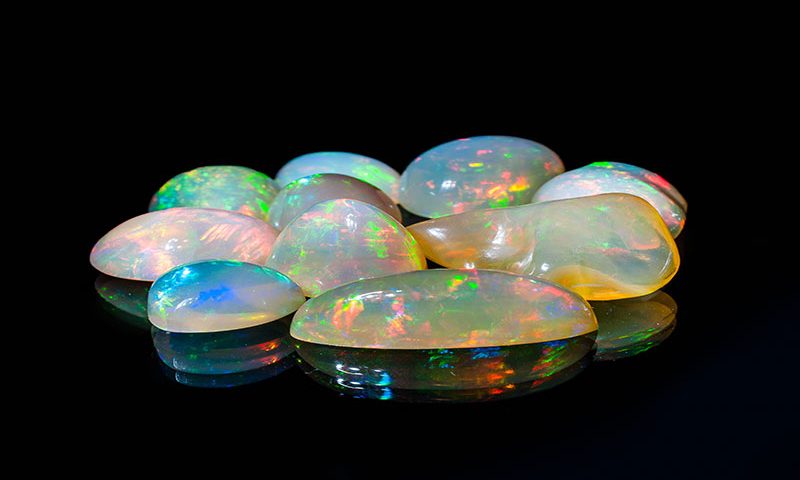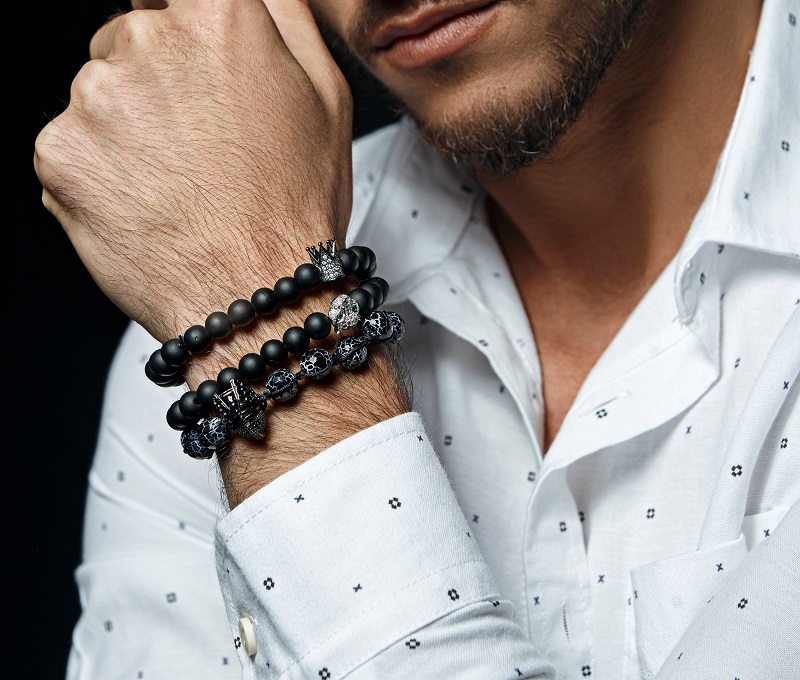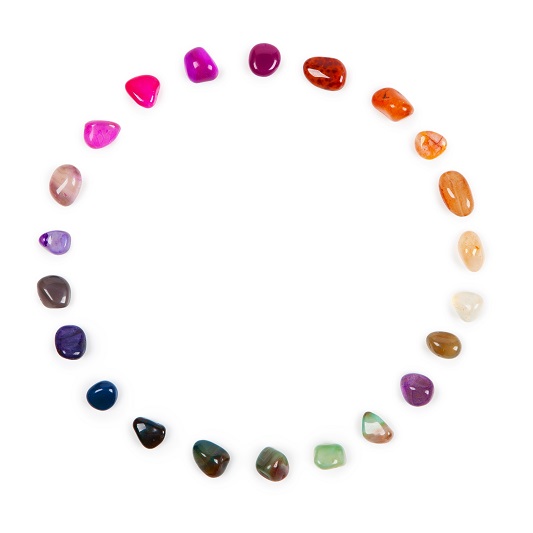Gemstone of the Week: Opal

La Biennale Paris: Everything You Need to Know
28th July 2017
Best Designer Shopping Streets in the World
28th July 2017
Widely considered one of the most breathtaking gems in the world, opal is, typically, an iridescent jewel boasting a spectacular rainbow of colours set against a translucent backdrop. Opal is underrated; however, opal and black opal especially has a value that rivals diamonds and other precious stones.
Thanks to its mystical appearance, opal has long been prized by cultures all over the world. In his book, The World of Opals (1997), award-winning author and opal enthusiast Allan W. Eckert wrote: “Some, like the ancient Arabs, believed the stone to be endowed with the brilliance of lightning and the color of fire and then dropped from the heavens as a gift of the gods. Some believed the stone was simply imbued with magical powers that manifested themselves in these amazing arrays of shifting patterns and intense colors.” However, many had more grounded theories as to why opal omitted such a spectacular display of colour. Eckert adds: “Others, of more pragmatic inclination, believed oil to be trapped within the stone and emitting its interference colors and patterns, as occurs when a drop of oil is placed on the surface of water.” In fact, it is diffraction that determines opals’ colour – just like on the back of a CD. Light is interrupted when it passes through the stone’s natural water and silica solution-filled fissures, veins, and cavities – causing light to diffract and present a medley of colour.
Just like other types of precious stones, opal is often found in both low and high-end jewellery, including necklaces, earrings, rings, bracelets, and brooches, and has seemingly infinite variations.
How to Identify Opal
Typically, opal is very easy to identify by its striking “play-of-colour”; however, some types of Opal are harder to identify, such as “common opal” and “fire opal” – both of which do not present a play-of-colour. Also, there are a variety of synthetic opal products out there, including Gilson Opal which is formed in a lab and has unusually bright colours and consistent patterns, in comparison to genuine opal where patterns are often sporadic thanks to natural inconsistencies. Another way you can differentiate a real opal from a synthetic opal is to inspect its ‘layers’ from the side. In a genuine opal, typically, you won’t be able to see visible layers, whereas synthetic opal often has easy-to-see layers.
Different Colours and Types of Opal
Like most other precious gemstones, opal comes in a variety of styles, including varying colours, patterns, shapes and sizes. Some of the world’s most desirable and precious types of opal include:
Light/White Opal
The most common type of opal is white or light opal, which we can differentiate by its milky white, cream or light grey backdrop. Brazilian opal is a good example of light/white opal, often featuring a medley of vibrant red or pink, blue, green and yellow tones set against a translucent white backdrop.
Black/Dark Opal
The most precious opal is black or dark opal, which has a black or dark grey body of colour. Some of the highest quality black opals fetch upwards of £8,000 per carat. Some of the most recognisable black opals have a distinct black backdrop speckled with galaxy-like patterns in blue, green and fiery yellow, red and orange; although, some black opals have a simplistic scattered, powdery vivid blue pattern.
Crystal Opal
If an opal is transparent or translucent and has an evident play-of-colour, it is most likely a crystal opal. Crystal opals are the most popular type of opal to be used in low to mid-range jewellery. Typically, they feature a medley of green and blue; however, some have vibrant yellow and misty pink tones, too. Mexican opals, including Mexican water opals, are particularly good examples of crystal opal.
Ethiopian Opal
There are dozens of types of opal found in Ethiopia; the Ethiopian opal is often identifiable by its honeycomb pattern with visible veins. Ethiopian opals come in a variety of colour variations, including deep orange, yellow, blue, green and red. Most Ethiopian opals are translucent and light in colour.
Boulder Opal
An increasingly popular type of opal; boulder opal forms in the cracks of natural brown ironstone boulders or, in South Australia, quartz. It creates an earthy rock with veins of iridescent opal running through the stone. Particularly striking types of boulder opal have patterns similar to leopard skin.
Where is Opal Found?
Opal is found all over the world; mines in Australia produce more than 90% of the world’s precious opal, including those in areas such as Coober Pedy, Mintabie, Andamooka, and Lightning Ridge, to name a few. Opal is also found in the United States, Mexico, and Brazil, as well as in Ethiopia and across Europe in countries such as Poland, Slovakia and the Czech Republic. One of the most renowned opal mines in the world is Coober Pedy in South Australia, which stretches a staggering eight miles. In 1956, Coober Pedy produced the world’s largest uncut black opal. Lightning Ridge in Australia is another favourite and is where, in 1938, miners found the famous Aurora Australis Opal; the opal is the most valuable ever found, weighing 180 karats and valued at more than half a million pounds.
Healing Properties of Opal
In addition to its mesmerising appearance, opal has a variety both physical and emotional healing properties. Opal promotes eye, hair and skin heal, and is often used to treat eye-associated disorders. It is also thought to help rid the body of infection. Emotionally and mentally, opal is a supportive stone that aids emotional strength and healing. Opal encourages happiness by freeing the mind of negativity and promoting positivity, love, creativity and spontaneity. Opal is also thought to bring good luck.
In Summary
For thousands of years, opal has been in high regard thanks to its mesmerising colours and patterns. Better still, it is a very powerful stone and much more than just a pretty face; it also has excellent healing properties. Opal comes in all colours, shapes, and sizes; when shopping for opals, always make sure that patterns are not synthetic, which means too consistent, and that layers are invisible. If you have money to spend, black opals are the most precious while light opals are much more common.




